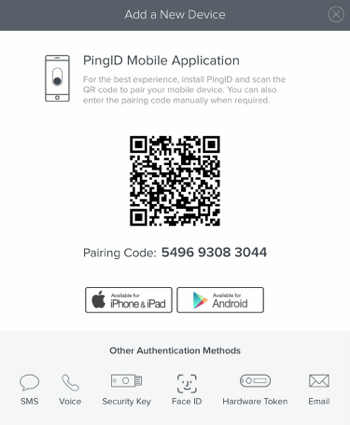Using iOS or iPadOS biometrics for authentication with PingID
If your iOS device supports FIDO2 biometrics, you can use the built-in biometrics in your device (Face ID or Touch ID) to authenticate with PingID for a secure sign-on experience. To set up your iOS device for secure authentication with PingID, you need to register or 'pair' it with your account.
You can use your iOS device (iPhone or iPad) to access your account or apps using a web browser.
|
PingID mobile app using biometrics and iOS biometric authentication are different methods of authentication:
|
-
Web only
Pairing your iOS or iPadOS biometrics device
Pair your iOS or iPadOS device so that you can use it to authenticate with PingID.
Before you begin
-
Ensure your device supports FIDO2 biometrics and is running iOS 14 or later or iPadOS 14 or later.
-
Set up biometric authentication on your accessing device, such as registering your face or fingerprints. Follow the manufacturer’s guidelines to do so.
-
Ensure you are using a browser that supports the use of FIDO2 biometrics, such as Safari, and that you have the latest version of the browser.

About this task
Follow the instructions below to set up biometrics authentication on your device. The following example shows the process on an iPad device.
Steps
-
From the registration window, click Start.

You’ll see the Add a New Device window, showing the Face ID icon.

-
In the Add a New Device window, click Face ID.
Tap Authenticate using Face ID, even if your device only supports fingerprint authentication. You will be able to authenticate using your fingerprint.
Result:
A window appears prompting you to authenticate using your biometrics device.

-
Use your device to validate your identity with fingerprint or Face ID.
Make sure that the Alternative Authentication window is the active window.
If a message appears asking you to allow your device to communicate with the biometrics device, select Allow or Yes to continue. The message might differ depending on your browser.
Result:
A green Authenticated message with a check mark appears, indicating your device pairing is successful, and you are automatically signed on to your account or app.
-
The next time you want to sign on to your account or application, follow the prompt to authenticate using your biometrics device.
For more information, see Authenticating with PingID using iOS or iPadOS biometrics.